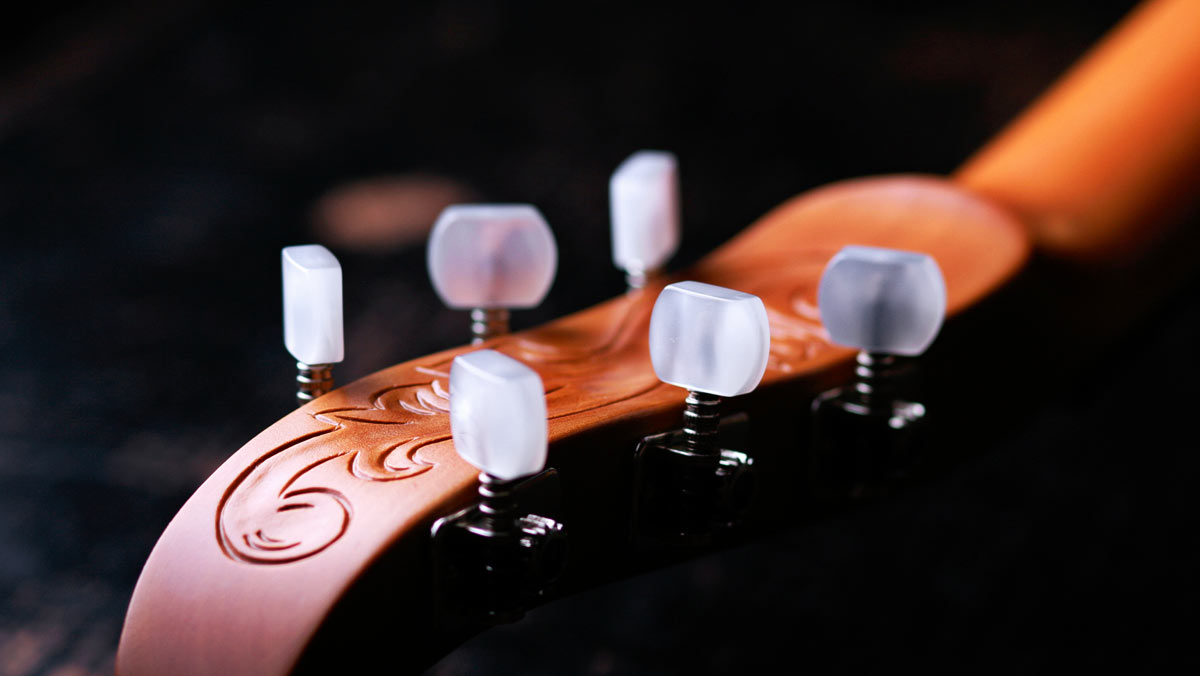Improve
Improve Your Pitch
A great musical performance depends on many factors, but one of the most fundamental ingredients for a successful delivery is pitch. As listener we notice when a vocalist has command over it. It is pitch, which gives each and every note of the performance its musical expression, and it is pitch which gives a vocal interpretation of a musical piece its distinctiveness.
As a vocalist you do not only want to avoid mistakes and sing in tune, you do want to intentional manipulate pitch as a form of expression. It is for that reason, that many musicians including vocalists make an active effort to develop their ability to know and produce pitch. They do this with exercising the ability to recognize pitch when they hear it, be it in relative context by using a reference, or be it in absolute context without reference. Further they exercise their ability to reproduce pitch on their instrument of choice, and by using their voice.
- What is pitch?
- What is key and scale?
- Tuning instruments
- Can we tune our voice?
- The importance of pitch in language
- What is the difference between relative and absolute pitch?
- Exercises

Tuning an instrument makes a specific key more accessible.
^ What is pitch?
All musical sounds can be described through a number of basic qualities: the amplitude, duration, tone colour, and pitch. The amplitude determines how loud a sound is, and the duration describes its length. Tone colour reveals the harmonic profile or quality of a sound, and pitch describes the degree of how low or high a tone is. Since a tone is created by vibrations, its pitch can be defined by the frequency of these vibrations.
In music we use established tuning systems to place specific frequencies into context, meaning we give certain frequencies names such as C - C# - D - D# etc. The most common tuning system in Western music is the "chromatic scale" implementing twelve pitches (per octave) which are dividing the frequency scale in semitones. The exact distance between those semitones may differ slightly depending on tuning of an instrument. This is called temperament.
The tuning system defines which pitches can be used to create music, which means it defines certain frequencies and the spacing between them to reach a more natural and harmonic interaction of these pitches when they are combined. Please note that these definitions are a compromise, because depending on the mathematical base of the calculation (2:1 for the octave, 3:2 for the fifth, 4:3 for the fourth etc.) the same note could be placed on different frequencies, up to a few cents apart. For reference, semitones are about 100 cents apart from each other.
It is for that reason that certain combinations of tones within the tuning system still sound disharmonic.
^ What is key and scale?
Thankfully we have an additional concept sitting on top of the tuning system, that will rescue us from being disharmonic. We have the ability to limit the use of all accessible semitones to a subset of tones by defining a fundamental pitch, which is called the musical key.
We then can add musical notes by increasing the pitch (ascending), or by decreasing the pitch (descending) to define a scale which is simply a sequence of ordered musical notes. The distance between pitches is called interval, and can be as small as one semitone. Sometimes the added notes differ depending on the direction of the scale. Popular examples for the chromatic scale are Melodic Minor and the Blues Scale. Another example can be found in traditional Indian music, where the group of notes used to ascend or descend a melody may be completely different from each other. The tonal framework to construct these note groups is called raga.
Depending on the arrangement of these pitches we define the tonality and function of the scale. Per example we can build happy and cheerful sounding Majors, or serious and dramatic sounding Minors. In modern popular music oftentimes we only find one key (and scale) used at a time. Sometimes its one key for the whole piece of music, sometimes as music progresses the key may change within the same song.
There's also music out there that uses multiple keys simultaneously, meaning at the same time. If two keys are used, it is called bitonality, and if multiple keys are used we call this polytonality. The latter can be found per example in the Lithuanian traditional singing style called sutartines, a folk music style that became popular in the 19th to 20th century.
^ Tuning instruments
The tuning system gives us an orientation of the desired pitches we want to use when we create music. Many instruments give us the ability to change its musical behaviour by applying a process to its sound generating parts, for example by adjusting tension to its strings on stringed instruments. We call this tuning the instrument.
The advantage of this process is that we then know where or how a certain pitch is created on that instrument. We also do this to make it easier to play a certain song, to give the instrument a specific tone, and to enable us to make use of the open strings on a stringed instrument.
It is important to mention, that even if we tune an instrument to a specific musical key, we still are able to play any other scale on that same instrument. All we did is making a specific key more accessible.
^ Can we tune our voice?
If the vocalist sings notes which are matching the frequencies chosen within the key (or scale), he or she will be in tune. If the vocalist sings a frequency which marks an undefined position anywhere between two notes within the scale, the vocalist will most likely sound off pitch. However, the vocalist can use the manipulation of pitch as a means of expression, per example through use of slides, vibrato, or pitch bends to shape the notes he or she sings.
Without post processing of the voice, be it live or on an existing recording, it is of course not possible to tune the voice. All the vocalist can do to achieve being in tune is to train the hearing, and to improve upon vocal ability over time.
^ The importance of pitch in language
Thankfully the ability to hear pitch is more or less rooted within our culture as human beings, which is why even an untrained ear will easily spot a note being out of tune. Since birth we experience pitch as one of the components in communication, for some as an integral part of our language, for others as an ingredient. It is noteworthy that pitch plays a different role in different languages, and that some vocalists have a slight advantage in producing and recognizing pitch just because of their first language.
If we divide languages by this factor alone, we end up with two categories, one being "tonal languages" like per example Mandarin, Cantonese, Thai, and Vietnamese, and the other being "pitch accent languages" such as Japanese, Greek, and English.
For tonal language the pitch and pitch pattern carries meaning, which is also called "phonemic". The speaker of such a language produces vowels that are spoken with either upwards or downwards sliding pitch. For words with exact same spelling, but different pitch the semantic meaning of that word changes with the pitch. Because of the importance of pitch in tonal languages, knowing one of these languages may have a positive influence on the ability to reach absolute pitch.
Pitch accent languages are "allophonic", meaning that pitch is not the integral information for a words' semantic sense. Other factors like phonological environment, context, and emphasis weigh in. In general pitch is given to multiple syllables with those languages, resulting in a melody of speech. This melody and changes to it made by altering pitch may accentuate meaning and give additional context in those languages. To the extreme a change in sense through pitch may come down to words with two syllables as per example in Japanese language.
^ What is the difference between relative and absolute pitch?
So far we have had an insight of what pitch is, and how it is implemented in both, the music we love, and our lives in general. We also understood that as a vocalist and musician we very much want to improve upon the skill of recognizing pitch, as well as being able to produce the correct pitch on demand.
With an untrained ear you will most likely have great difficulty to understand what is going on in the music you hear. It is important to understand that there are two different ways on how to improve on pitch, and therefore two kind of exercises which train different things.
The ability to understand pitch can be trained by looking and comparing a given musical note with a reference note, usually that note that precedes the note that you want to recognize. This is done by looking at the interval, which describes the distance between the current note and the reference note. The method is called relative pitch, and with this ability you will be able to improvise your instrument play or singing. Relative pitch gives you the ability to understand how notes relate to one another, what type of chord you hear, how to harmonize a melody (meaning to add chords to a single melody), and how to progress a harmony to create a musical flow.
Another concept of training pitch is to be able to name and reproduce a musical note without any reference just by hearing it. This is called absolute pitch, or perfect pitch. If you master absolute pitch, you will be able to identify a note's or chord's exact position within the tuning system just through listening to it. You will also be able to identify the key in which a song is written.
Since these two abilities are different from each other and are giving the vocalist and musician a different skillset, it is clever to practice both skills alongside each other. Progress on one skill will help with the other skill and vice versa. If you master both skills flawlessly, you will be rewarded by gaining complete knowledge about the music you hear just by listening. That includes the notes, melodies, chords, harmonies, and the progressions thereof.
It has been generally accepted that pitch training should include the voice as instrument of reproduction, even for those who don't sing but need pitch to master their instrument. The reason why we should include the voice is because it will help us with the reproduction of pitch in our imagination, meaning when we think of the pitch or create a pitch in our head.
^ Exercises
Training pitch is a long and intensive process, meaning that you cannot expect immediate results. It is in general a good idea to create an exercising routine that you repeat on a recurring base, perhaps daily. Even a few minutes of recurring exercising will help with your pitch over time.
The set of exercises we collected here intend to expand your sense of tuning. After initially freeing your voice you should be able to improve upon your overall control of pitch by reproducing pitches with your voice. Alongside you will gain a better ear for semitones and tones, and you might widen your comfortable range over time.
- Sighing Exercise
- Portamento Pitch Sweeps
- Singing Scales
- Imitating a Tuner
- Using a Tuner
- Detune an Instrument
^ Sighing Exercise
In this exercise we want to simply free up the voice by creating sounds that vocalize a sweeping pitch downwards. Choose a rather high note within your vocal range and start a well sounding sigh, which starts on pitch with the high note and ends in a much lower pitch. During the sweep make sure to keep your voice audible as long as possible. Repeat the exercise by going through your vocal range backwards, always choosing a lower note next.
^ Portamento Pitch Sweeps
After you freed up your voice you can move on and pick two pitches, a start pitch from the lower end of your vocal range, and an end pitch that is an amount of semitones higher than the start pitch. Start singing the starting pitch as exact as you can and slowly slide to the target pitch. End the exercise on the exact pitch as possible. You can either sing openly (per example an "Ah"), or hum the note.
You may play along on an instrument to gain an understanding of the position within your sweep, and you may expand the exercise to cover your complete vocal range.
Ascending Sweeps
- Choose a C, end at E (4th)
- Choose a C, end at F (5th)
- Choose a C, end at G (7th)
- Choose a C, end at C' (octave)
- Repeat this exercise by going upwards through your range
Descending Sweeps
- Choose a C', end at G# (4th)
- Choose a C', end at G (5th)
- Choose a C', end at F (7th)
- Choose a C', end at C (octave)
- Repeat this exercise by going downwards through your range
^ Singing Scales
In this exercise we will sing through an amount of notes within our vocal range by singing each of the notes precisely. We will not sweep or slide from one note to the other. You may play along on an instrument to gain understanding of the pitch of the target semitone or tone, and you may expand the exercise to cover your complete vocal range.
Semitones
- Sing each semitone starting at C and ending at E (4th)
- Sing each semitone starting at C and ending at F (5th)
- Sing each semitone starting at C and ending at G (7th)
- Sing each semitone starting at C and ending at C' (octave)
- Sing each semitone starting at C' and ending at G# (4th)
- Sing each semitone starting at C' and ending at G (5th)
- Sing each semitone starting at C' and ending at F (7th)
- Sing each semitone starting at C' and ending at C (octave)
Tones
- Sing each tone starting at C and ending at E (4th)
- Sing each tone starting at C and ending at F (5th)
- Sing each tone starting at C and ending at G (7th)
- Sing each tone starting at C and ending at C' (octave)
- Sing each tone starting at C' and ending at G# (4th)
- Sing each tone starting at C' and ending at G (5th)
- Sing each tone starting at C' and ending at F (7th)
- Sing each tone starting at C' and ending at C (octave)
^ Imitating a Tuner
A great way to understand pitch and train the ability to reproduce a pitch from the chromatic scale flawlessly is to sing back a note played on a keyboard or piano.
Choose notes that fall into your vocal range and start singing while the note played on the instrument still sounds. Imagine the tuning process of per example a guitar, at which you play a note on one string and pluck the empty string to tune. You usually listen to the vibrations of both strings and how they interact with each other to tune the string of the instrument.
You can do the same thing when you sing back a note to the keyboard or piano. Listen to the interaction of the vibrations of both sounds and change your singing until the frequencies match and you are in tune! Go through each note of your vocal range and match your voice to the notes. Doing this repeatedly will create a memory of the correct pitch over time, and you also will get faster in hitting the notes.
^ Using a Tuner
Some modern tuners and many tuner software applications enable the user to see if you are in tune, and how sharp or flat you are if you are not in tune. Assuming that the tuner recognizes the chromatic scale or at least lets you choose a target note to tune to, you can use such a tuner to train absolute pitch.
Play a desired note from your vocal range and sing the note to the tuner. If you need to set the target note on the tuner, do this first. Check your pitch and how sharp or flat you are and adjust your voice accordingly to match the targeted tone as close as possible. Go through your vocal range and repeat the exercise.
The exercise will also give you an insight of how you approach a specific note, meaning if you are starting to sing the note too low or too high at first. Knowing this might be helpful, because in general you should approach higher notes from above and lower notes from below to make the singer's life easier.
^ Detune an Instrument
Grab an instrument, per example a guitar, and detune one string slightly. Play a melody or some chords solo or to a playback track. Listen to the sound of your instrument and how the detuned string impacts the sound of your play. You should be able to spot the mistuned string and each note you play on it.
In a second step try to correct the imperfection by adjusting your playing technique, meaning to bend your string to correct the bad pitch. See, if you can achieve to make the string sound in tune. You can expand the exercise by recording your play on both, a well tuned instrument and the mistuned instrument where you adjust your play, to see if you were able to reach the correct pitch.
Variations
- Detune your string flat
- Detune your string sharp
- Start with excessive detuning, and then repeat the exercise with less and less detuning.














